Non-stick cookware has revolutionized the way we cook and clean, becoming a staple in modern kitchens. This versatile kitchen cookware includes items like non-stick kadais, non-stick tawas, and induction tawas, making cooking a breeze. In this blog, we’ll explore the purpose of non-stick cookware and why it’s an invaluable addition to any kitchen cookware set.
The Purpose of Non-Stick Cookware
Non-stick cookware is designed to prevent food from sticking to the surface during cooking. This feature offers several benefits that make it an essential part of any kitchen. Here’s why non-stick cookware is so popular:
1. Healthier Cooking
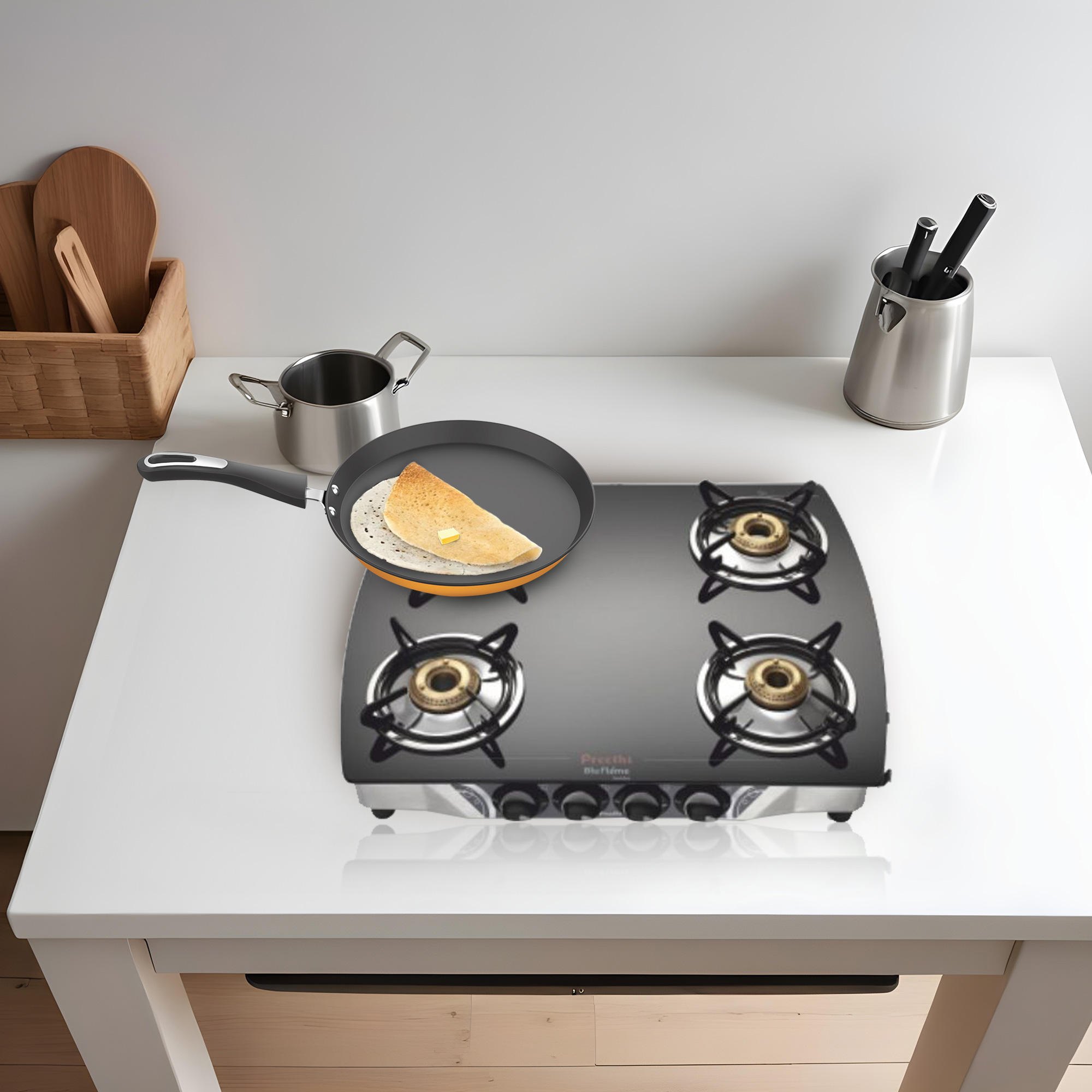
One of the main advantages of non-stick cookware is its ability to cook with minimal oil or butter. The non-stick surface ensures that food doesn’t adhere to the pan, allowing you to prepare healthier meals with less fat. This is especially beneficial for those looking to reduce their calorie intake and maintain a healthy diet.
2. Easy Cleaning
Non-stick cookware is incredibly easy to clean. Unlike traditional cookware, where food can get stuck and become difficult to remove, non-stick surfaces allow for effortless cleaning. A soft sponge and mild detergent are usually all you need to keep your non-stick cookware looking like new. This convenience saves time and effort, making it ideal for busy households.
3. Versatility in Cooking
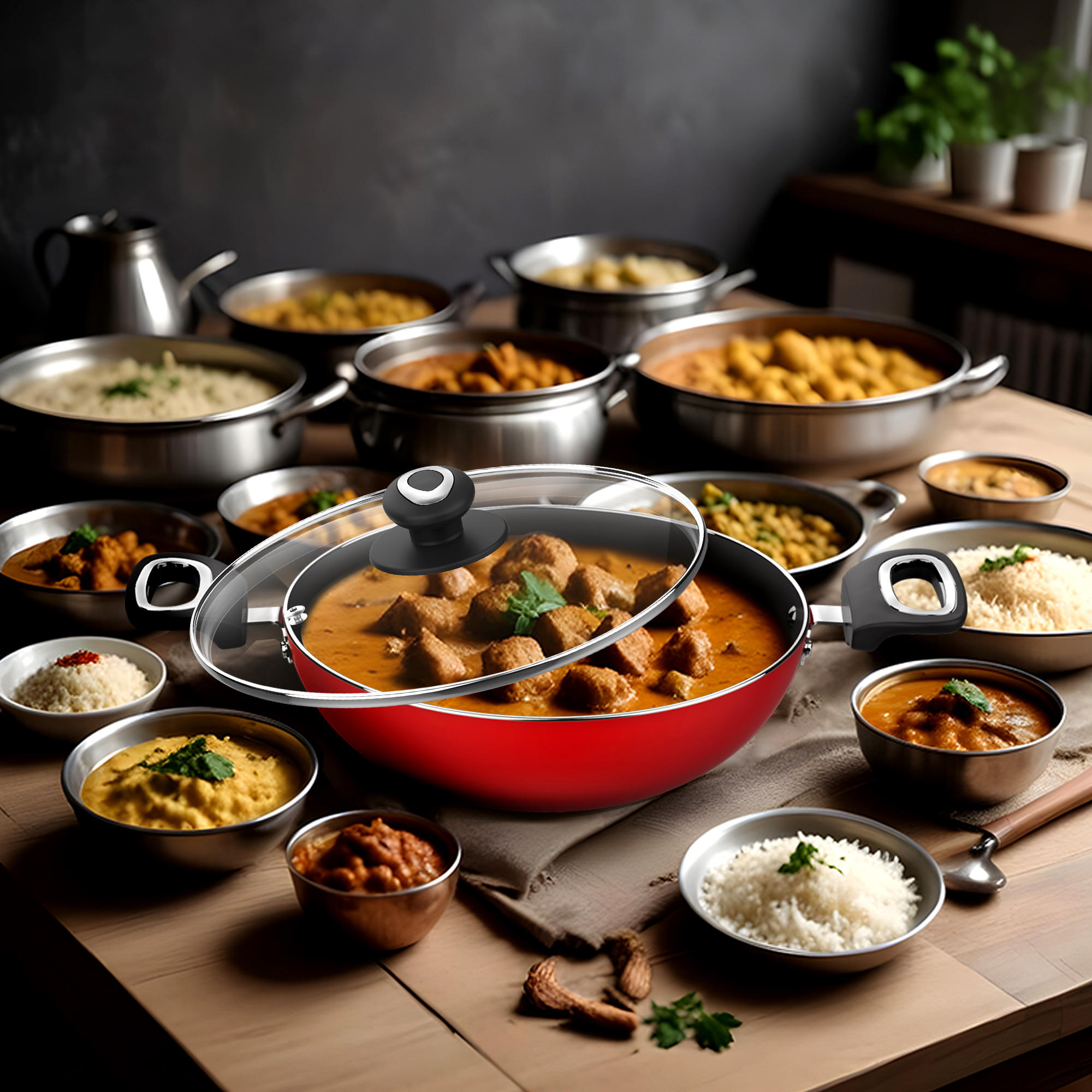
Non-stick cookware is versatile and can be used for a wide range of cooking tasks. From frying and sautéing to baking and simmering, non-stick pans and pots are suitable for various recipes. Items like non-stick tawas are perfect for making dosas, chapatis, and pancakes, while non-stick kadais are great for curries, stir-fries, and deep-frying.
4. Even Heat Distribution
High-quality non-stick cookware is designed to distribute heat evenly across the surface. This ensures that your food cooks uniformly, preventing hot spots that can cause burning or uneven cooking. Even heat distribution is crucial for achieving perfect results, especially when preparing delicate dishes.
5. Enhanced Durability
Modern non-stick cookware is made with advanced materials that enhance durability and longevity. Hard-anodized aluminum, for example, is a popular choice for non-stick cookware due to its strength and resistance to scratches and corrosion. With proper care, non-stick cookware can last for many years, providing excellent value for your investment.
Incorporating Non-Stick Cookware into Your Kitchen Cookware Set
Adding non-stick cookware to your kitchen cookware set can elevate your cooking experience. Here’s how different types of non-stick cookware can be incorporated into your kitchen:
Non-Stick Kadai
A non-stick kadai is a versatile piece of kitchen cookware that is perfect for deep-frying, sautéing, and preparing a variety of dishes. The non-stick surface ensures that food doesn’t stick, making it easier to cook and clean. Whether you’re making a rich curry or a quick stir-fry, a non-stick kadai is a valuable addition to your kitchen.
Non-Stick Tawa
A non-stick tawa is essential for making traditional Indian flatbreads like chapatis and dosas. The non-stick coating allows for even cooking and easy flipping, ensuring perfect results every time. Non-stick tawas are also great for making pancakes, crepes, and other griddle-cooked items.
Induction Tawa
If you have an induction cooktop, an induction tawa is a must-have. Induction tawas are specially designed to work with induction cooktops, providing quick and efficient heating. They offer the same non-stick benefits as regular tawas but are optimized for induction cooking, making them a versatile addition to your kitchen.
Tips for Using and Maintaining Non-Stick Cookware
To get the most out of your non-stick cookware, follow these tips for proper use and maintenance:
Use the Right Utensils
To protect the non-stick coating, always use wooden, silicone, or plastic utensils. Avoid using metal utensils, as they can scratch and damage the non-stick surface.
Clean Properly
After each use, clean your non-stick cookware with a soft sponge and mild detergent. Avoid using abrasive scrubbers or harsh chemicals, as they can degrade the non-stick coating over time.
Avoid High Heat
While non-stick cookware can handle high temperatures, it’s best to use medium to low heat for cooking. Excessive heat can damage the non-stick surface and reduce its effectiveness.
Store Carefully
When storing non-stick cookware, place a soft cloth or paper towel between stacked items to prevent scratches. Proper storage helps maintain the integrity of the non-stick coating.
Conclusion
Non-stick cookware is a game-changer in the kitchen, offering numerous benefits that enhance both cooking and cleaning experiences. From healthier cooking with less oil to easy cleaning and versatile uses, non-stick cookware is a valuable addition to any kitchen cookware set. By incorporating items like non-stick kadais, non-stick tawas, and induction tawas into your kitchen, you can enjoy the convenience and efficiency they bring to your culinary endeavors.
Invest in high-quality non-stick cookware and follow proper maintenance practices to ensure they last for years to come. Whether you’re a seasoned cook or a beginner, non-stick cookware makes cooking more enjoyable and less stressful, allowing you to focus on creating delicious and healthy meals for your family.
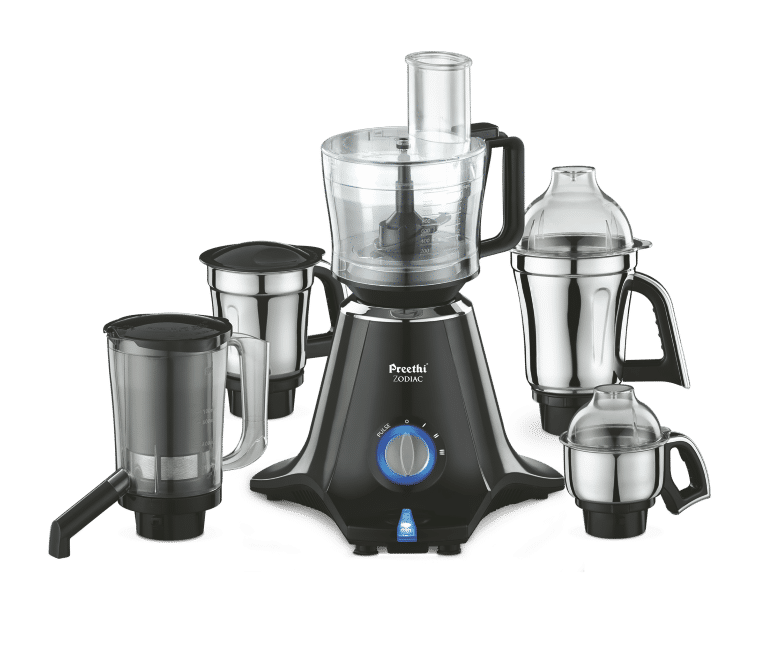
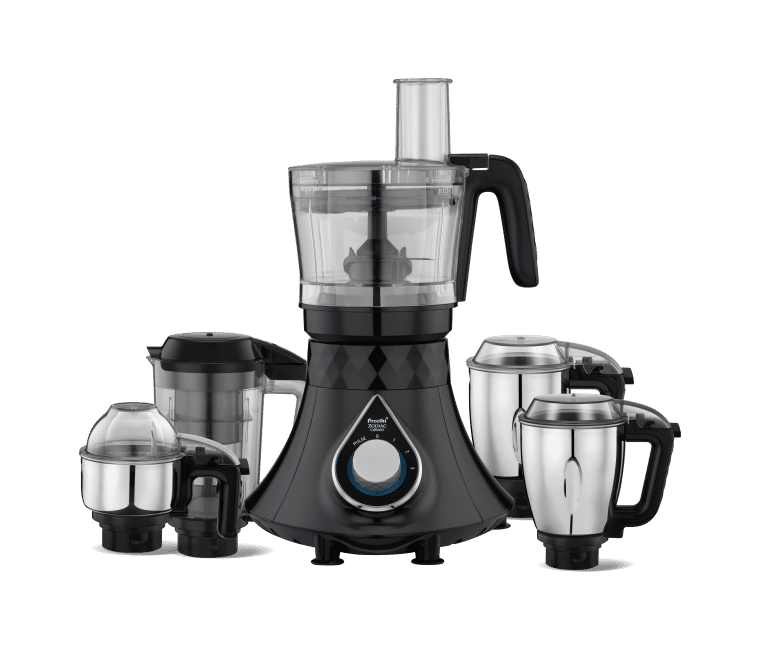
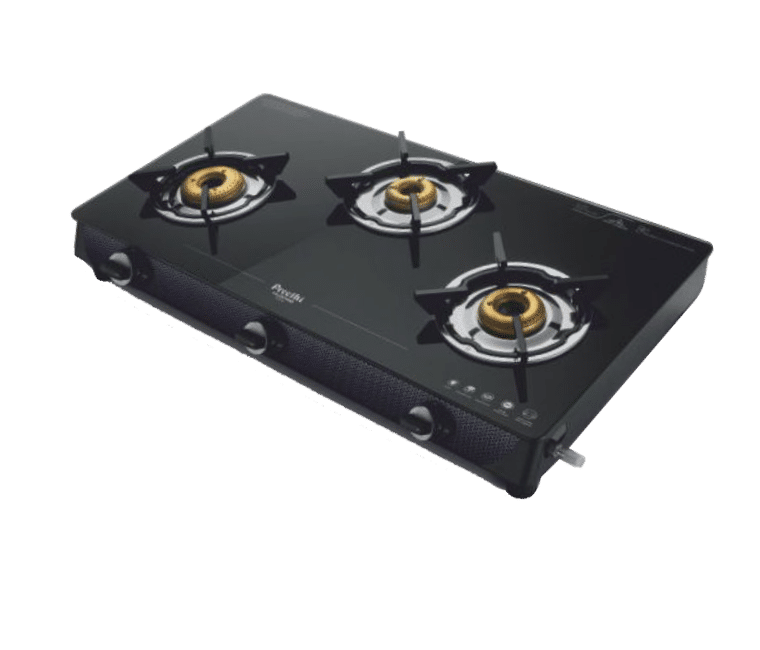

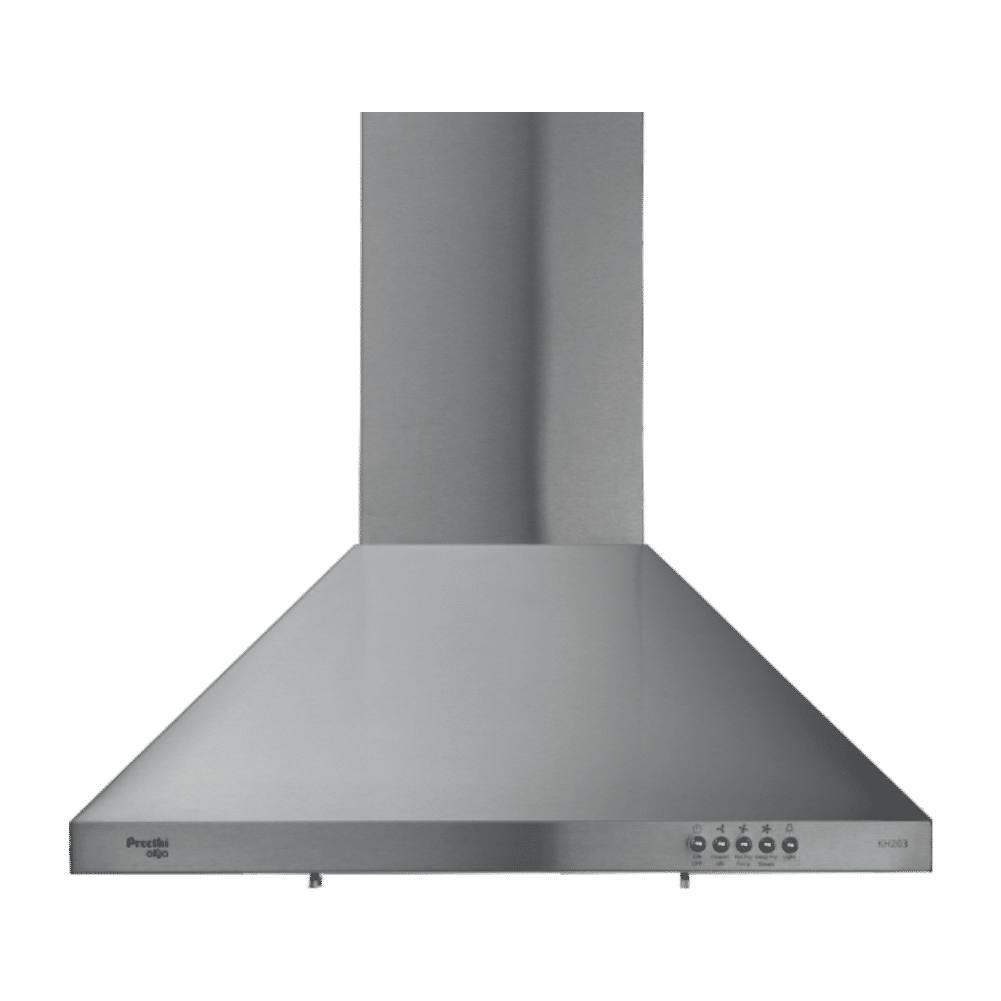
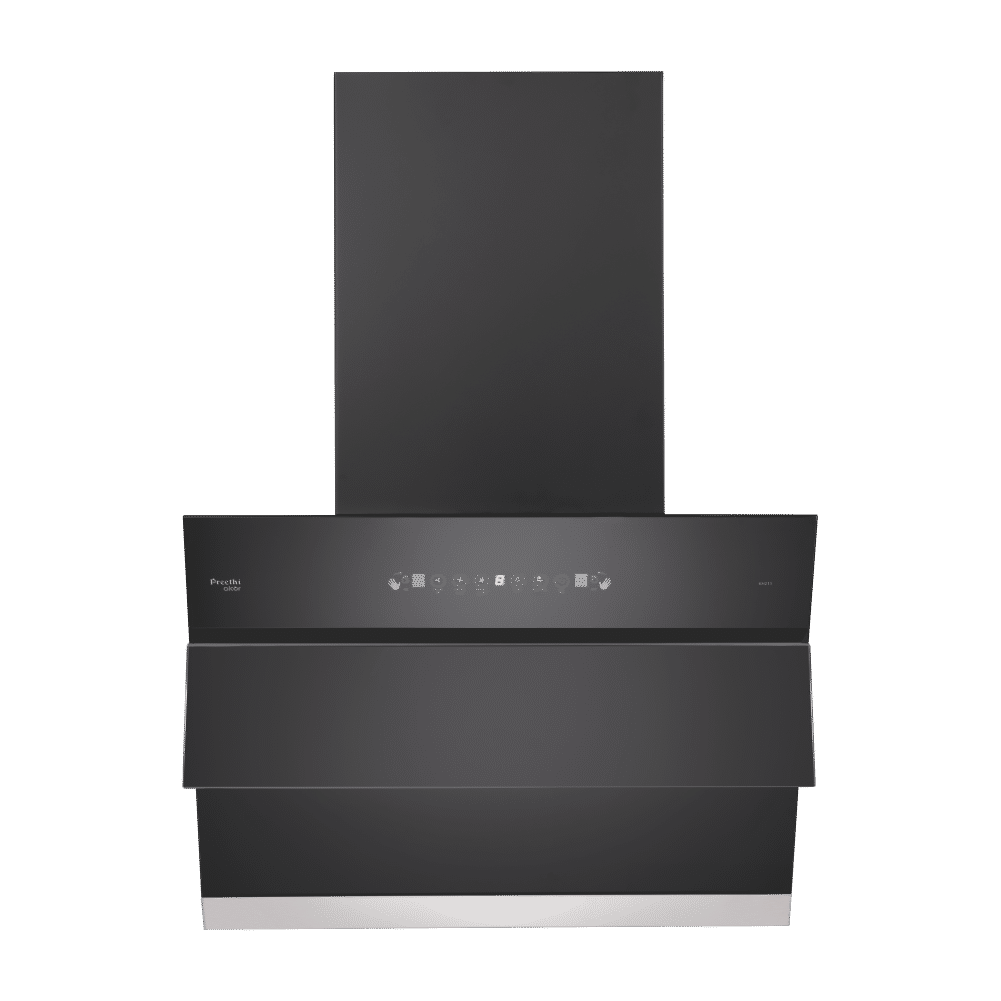



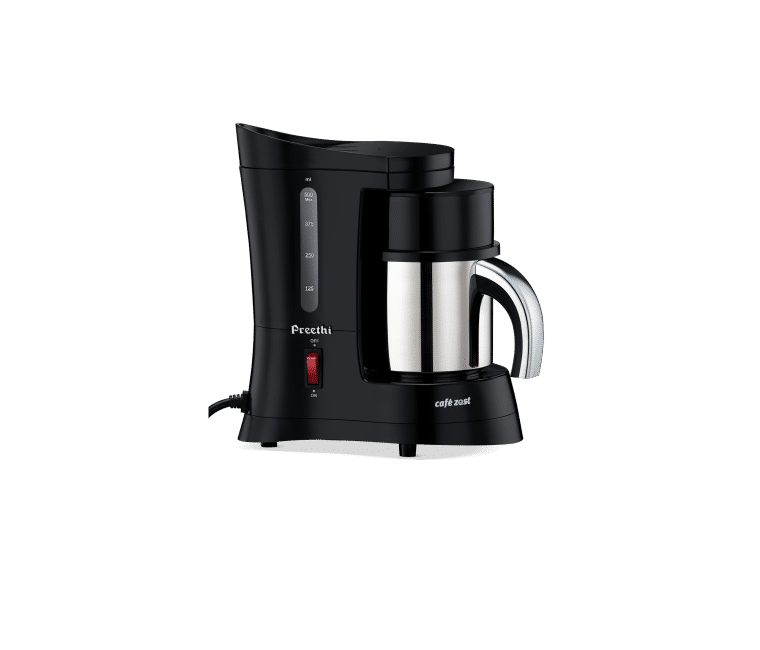

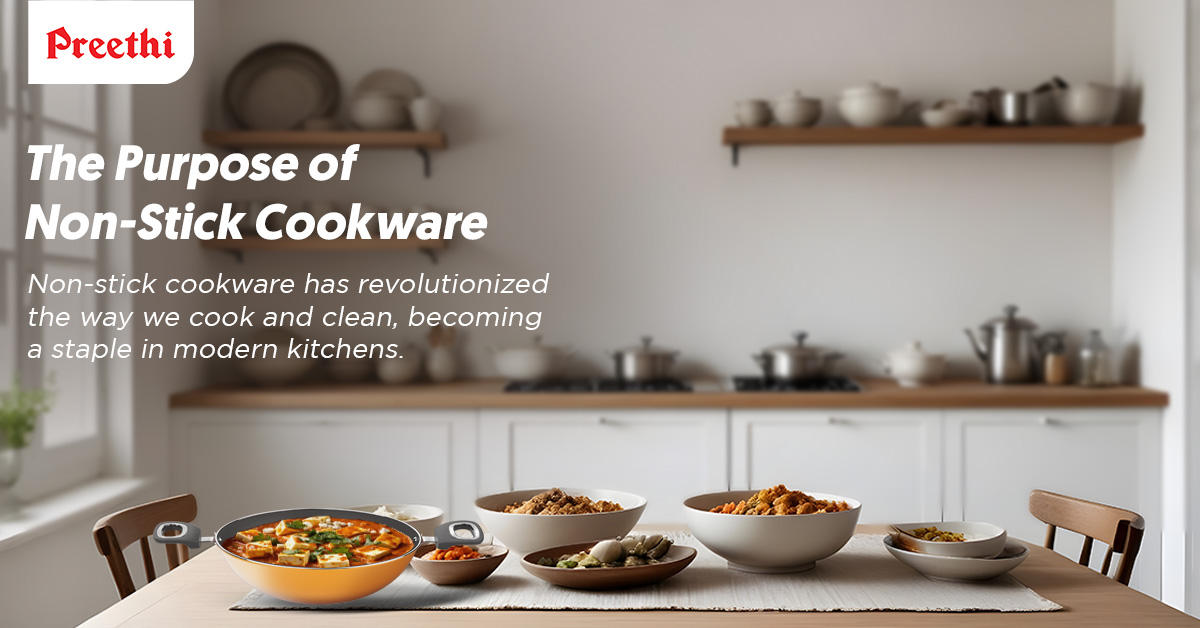

No comments